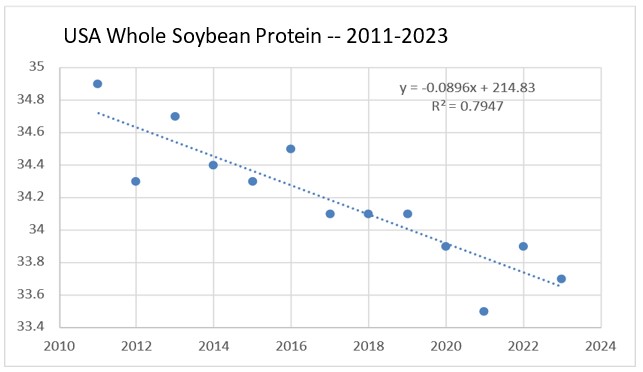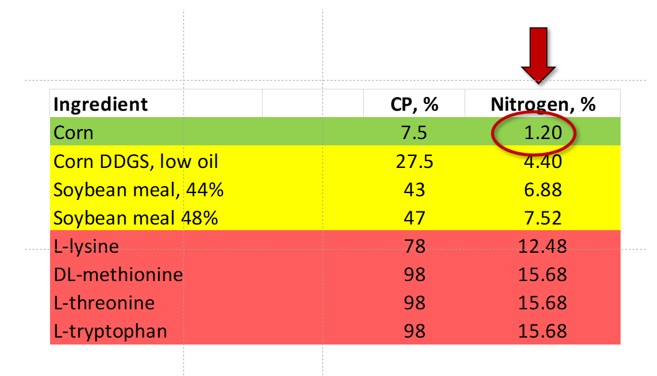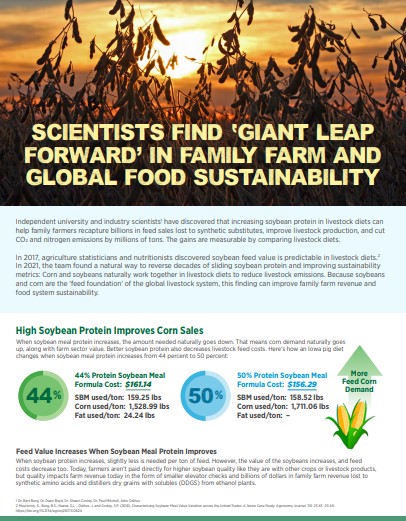Outcomes
The Benefits of ProActive Seed-to-Feed Science and Education
Here are a few of the benefits of ProActive seed-to-feed science and education teamwork:
- Combining agronomy, livestock nutrition, and sustainability sciences measurably increases sustainability of agricultural systems for feed, food, and biofuel production. Click Here for Soy-Livestock-Ecosystem Science
- The soybean industry reverses the protein decline.
- Graphic of the decline:
 Chart Source: 2023 Annual Soybean Quality Survey, United Soybean Board.
Chart Source: 2023 Annual Soybean Quality Survey, United Soybean Board. - Research funded by United Soybean Board found that increasing soybean protein increases soybean value: Quantifying the value of soybean meal in poultry and Swine Diets
- Graphic of the decline:
- Farmers begin recapturing billions in natural feed sales lost to synthetic substitutes.
- Reuters Story about falling Protein: Protein plight: Brazil steals U.S. soybean share in China.
- Livestock health and productivity improve because field-raised diets are naturally healthier than synthetic feed substitutes.
- Livestock CO2 from feed production drops by millions of tons when natural feed is prioritized.
- Science Support:
- Livestock nitrogen is reduced.

- Growth in circular agricultural economies powered by natural value chains.
- Multinational food companies use protein from bio-fuel plants to help millions more malnourished moms and infants get nutrition assistance.
- Science Support
- Rural and urban stakeholders build bridges of peace and prosperity while protecting ecosystems, using food as common ground.
Here’s a brochure about the science that led to Protein for Peace.

